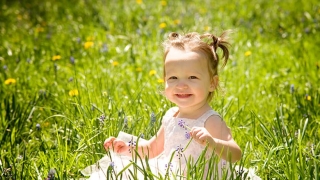Unicoronal and Sagittal Craniosynostosis: Brynnli's Story
Published on
Published on
Brynnli is a typical 2-year-old: bright and energetic, and learning quickly that her parents can barely keep up with her. Her mother, Shawnna, reports that every day brings a new accomplishment, her most recent being learning how to swim.
 Brynnli was born two months premature in July 2017. A month afterward, Shawnna noticed the shape of Brynnli’s head appeared abnormal. On a well visit to Brynnli’s doctor, Shawnna was told that the bulge above her forehead was a result of the way she slept while in the hospital.
Brynnli was born two months premature in July 2017. A month afterward, Shawnna noticed the shape of Brynnli’s head appeared abnormal. On a well visit to Brynnli’s doctor, Shawnna was told that the bulge above her forehead was a result of the way she slept while in the hospital.
As Brynnli grew over the next six months, so did her mother’s concerns that she would not outgrow her symptoms.
“On her right side, her head was bulging up and forward,” says Shawnna. “She looked like she had an injury or swelling. Her temple was dimpling in, and her eyes were not symmetrical. When I could no longer feel her soft spot, I began to research on my own.”
Brynnli and her family came to Children’s Hospital of Philadelphia (CHOP) in February 2018 and saw Jesse A. Taylor, MD, Chief of the Division of Plastic, Reconstructive and Oral Surgery, Co-Director of the Cleft Lip and Palate Program, and Co-Director of the Craniofacial Program. “Dr. Taylor walked in the room and, at first glance, was able to tell that she had [unicoronal and sagittal craniosynostosis].”
As a child grows, gaps — called sutures — along the growth plates in the skull allow the skull to grow. Since a child’s brain grows rapidly between birth and early childhood, it is important that the skull be able to grow as well. If one of these gaps becomes fused, or closes, too early, then the healthy growth of the child’s skull is slowed or even stopped. The result is an abnormal shape, which can cause damage to the growing brain. The condition is called craniosynostosis. In Brynnli’s case, both the seam that runs from the front to the back the skull (sagittal) and a seam that runs from the ear to the soft spot on her head (unicornal) were affected.
Some children with craniosynostosis have only one growth seam that closes early. Because Brynnli had two, there was an increased chance her brain would not have the space it needed to continue to grow normally. “Because she was such a rare case, Dr. Taylor said that she needed surgery and couldn’t wait,” says Shawnna.
Brynnli underwent cranial vault reconstruction to remove the fused areas of her skull. To slowly expand her skull, Dr. Taylor implanted devices called distractors that moved the bones back into place.
As Brynnli was being taken into surgery, she began to cry. “The only thing that would get her to stop crying at that point was a song by Alison Krauss, Baby Mine. I told the nurse and she found it on her phone, checked it against the song on mine, and began to play it for Brynnli as they took her away. And she stopped crying. That meant the world to me,” says Shawna.
After Dr. Taylor completed the surgery, he showed her family how to manually adjust the distractors at home every day. Each turn of the distractors moved the bones in Brynnli’s skull 1 millimeter closer to the correct position. The family appreciated Dr. Taylor’s careful instruction: “He answered every single question I had and went very slow,” says Shawna. “He showed us how to do the adjustments first and then made us do it in front of him so that he knew we could do it on our own.”
Shawnna says that the feeling of seeing your child undergo something so complicated at such a young age is difficult to articulate, and she depended on Dr. Taylor for support:
“Dr. Taylor was honestly the most comforting and understanding person during this process. He had the ability to comfort the child, comfort the parent, and consult with a neurosurgeon and with us at the same time.”
More than a year since her last surgery, Brynnli is doing well. Her follow-up treatment consists of annual checkups with the plastic surgery team to ensure additional sutures in her skull don’t become fused, and that her skull continues to grow normally.
Brynnil is also learning how to swim. “She’s doing phenomenally well,” says Shawnna. “We try not to single her out or draw attention to her health complications, but what she’s been through was very traumatic and eye opening. As scary as this journey has been, we want people to be aware of craniosynostosis and know the symptoms as it could save a child’s life.
"Today, she’s happy. She’s normal," her mom says. "She’s a regular kid who has just had some setbacks.”